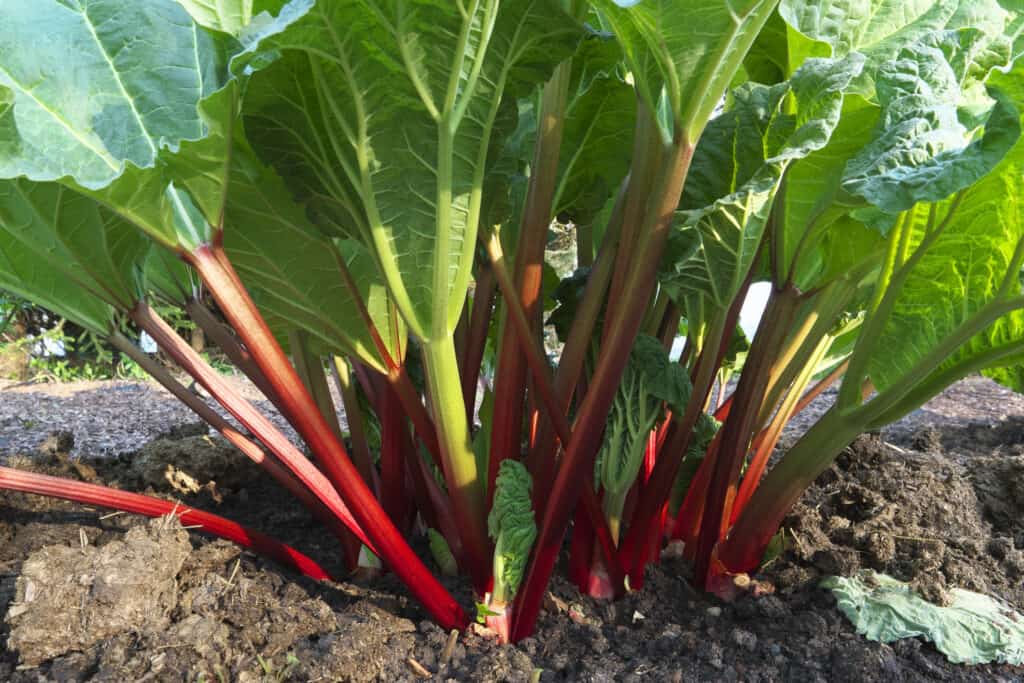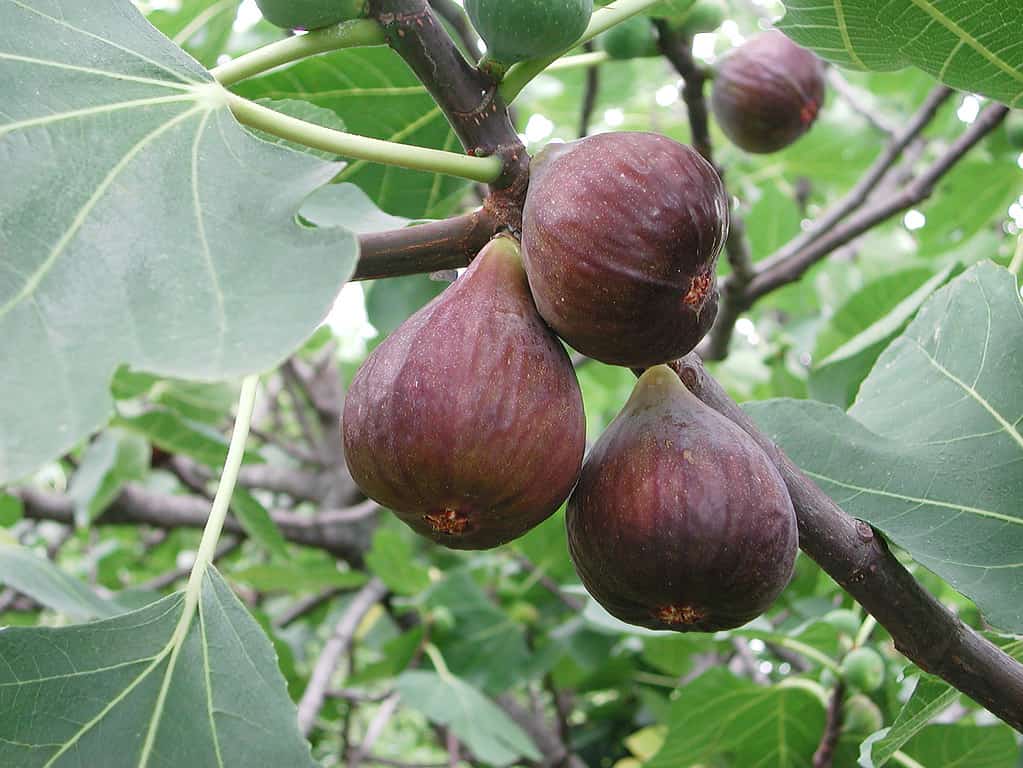If you’ve ever wondered why some plants thrive in one area of the Show-Me State but struggle in another, you’re about to uncover the secret. Planting zones in Missouri are like nature’s own GPS, guiding us to the best spots for growing different plants.
Missouri might be known for its diverse landscapes and changing weather, but these factors play a vital role in determining which plants can call this state their home. From the rolling Ozark hills to the fertile plains, each region has its unique planting zone. Let’s learn a bit more about planting zones in Missouri, shall we?

Hardiness zone map for Missouri
What is a Hardiness Zone Map?
Hardiness zones, also known as planting zones, serve as geographic indicators of climate conditions to help gardeners choose suitable plants for their regions. These zones are designed to inform gardeners about the average minimum winter temperatures of an area, aiding in the selection of plants that can withstand local weather extremes.
Decoding the Function of Hardiness Zone Maps
A hardiness zone map is a tool that visually represents different regions’ temperature ranges. These maps are created by organizations like the United States Department of Agriculture (USDA) and use a color-coded system to divide areas into zones based on their minimum wintertime cold temperatures. Each zone is usually designated by a number and letter combination, such as 5b or 7a.
Breaking Down the Zones
The division of regions into zones is determined by a 10-degree F difference in average minimum temperatures. As one moves from one zone to another, there is a gradual shift in temperature tolerance for plants. The lower the zone number, the colder the climate, and the higher the zone number, the warmer the climate.
Navigating the Color-Coded System
Planting zone maps use a color spectrum to help gardeners quickly identify the zones of different areas. Warmer zones are often represented with warmer colors like red and orange, while colder zones are depicted with cooler colors like blue and green. This visual representation simplifies the process of understanding and applying the information provided by the map.
Impact of Microclimates
While hardiness zones offer valuable insights, they may not account for microclimates within a larger region. Microclimates are localized areas with unique temperature patterns due to factors like elevation, proximity to bodies of water, and urban environments. These microclimates can create temperature variations that differ from the overall zone classification.
Selecting Plants Strategically
Gardeners can harness the power of planting zones in Missouri to select plants that are more likely to thrive in their specific climate. Choosing plants that match the zone’s temperature range increases the chances of successful growth. For instance, gardeners in colder zones should opt for plants that can withstand freezing temperatures, while those in warmer zones can experiment with more heat-tolerant species.
Adapting to a Changing Climate
Climate change has introduced new considerations for hardiness zones. As temperature patterns shift, some zones may experience changes in their temperature ranges. Gardeners need to stay informed about any updates to the planting zone map and be open to adjusting their plant selections to align with the evolving climate conditions.
What are Missouri’s Planting Zones?
Gardening enthusiasts understand the significance of planting zones in Missouri when it comes to selecting and nurturing plants. The state is divided into several zones, including 5b, 6a, 6b, 7a, and 7b. These zones play a pivotal role in determining which plants are most likely to thrive in different areas based on the prevailing climate conditions.
Zone 5b: Challenging Cold
The northern part of Missouri falls within hardiness zone 5b. This means that the area experiences winter temperatures that can drop as low as -15 to -10 degrees F. Gardeners in this zone should opt for plants that can withstand such cold temperatures, including varieties like the Siberian iris and the versatile yarrow.
Rhubarb, a cool-season vegetable with tart stalks, also finds its place here, thriving despite the cold. For fruits, strawberries have the resilience to withstand colder temperatures and thrive in zone 5b.

Rhubarb can grow very well in Zone 5b.
©iStock.com/veger
Zone 6a: Transition Zone
Moving southward, we encounter hardiness zone 6a, which encompasses parts of central Missouri. This zone has slightly milder winters, with minimum temperatures ranging between -10 to -5 degrees F. Gardeners in this zone can consider growing plants like the charming blanket flower and the vibrant coneflower.
Fruits like apples flourish in this zone, producing crisp and flavorful harvests. Peppers, both sweet and hot varieties, thrive among vegetables, adding a burst of flavor to dishes. Gardeners can also enjoy growing herbs such as rosemary, which adds aromatic richness to culinary creations.
Zone 6b: Mild Winter Conditions
Adjacent to zone 6a is the 6b zone, characterized by minimum winter temperatures of -5 to 0 degrees F. Gardeners in this zone can explore a wider variety of plants, including the striking black-eyed Susan and the fragrant lavender, which thrive in these relatively milder winter conditions.
Zone 6b’s relatively mild winter conditions open doors for a diverse selection of plants, fruits, and vegetables. Blueberries, known for their antioxidant-rich berries, flourish here, offering a sweet and nutritious bounty. Tomatoes, a favorite among gardeners, thrive in this zone, delivering juicy and vibrant fruits. Leafy greens like lettuce and spinach also thrive, providing fresh and healthy options for salads.
Zone 7a: Embracing Warmer Winters
Moving further south, we encounter zone 7a, which experiences even milder winter temperatures, ranging from 0 to 5 degrees F. This zone opens up opportunities for growing a diverse array of plants, such as the alluring hellebore and the classic daylily, thanks to the more temperate climate.
Zone 7a has warmer winters. An array of flavorful plants, fruits, and vegetables flourish in this zone. Peaches, celebrated for their sweet and juicy flesh, find their home here, rewarding gardeners with delectable harvests. Peas, both sugar snap and shelling varieties, thrive among vegetables, contributing their tender pods to culinary delights. Herbs like basil thrive in warmer conditions, infusing dishes with their aromatic essence.
Zone 7b: Favorable Growing Conditions
The southernmost part of Missouri is encompassed by hardiness zone 7b, characterized by minimum winter temperatures of 5 to 10 degrees F. Gardeners in this zone enjoy relatively mild winters and can successfully cultivate a wide range of plants, including the vibrant bougainvillea and the elegant agapanthus.
Zone 7b’s favorable growing conditions in the southernmost part of Missouri foster lush growth and abundant harvests. Fig trees thrive here, producing succulent fruits that add a unique sweetness to both savory and sweet dishes. Bell peppers, with their vibrant colors and crisp textures, flourish among vegetables, elevating a variety of recipes. Culinary herbs like oregano, known for their robust flavors, thrive in this zone’s temperate climate.

Fig trees can be found growing all around Zone 7b in Missouri.
©simona pavan/Shutterstock.com
12 Keys To Keeping Flowers, Shrubs, and Trees Alive in Missouri
Cultivating a vibrant and thriving garden in Missouri requires understanding the state’s unique climate and adopting strategies tailored to its specific challenges. Whether you’re tending to flowers, shrubs, or trees, here are essential tips and tricks to keep your green space flourishing.
1. Understanding Missouri’s Climate
Before delving into the specifics, it’s crucial to comprehend Missouri’s climate. With the diverse planting zones in Missouri, the state experiences a range of temperatures, from colder winters to warm summers. Being aware of the zone you’re in provides a foundation for successful gardening. Reference the first image in this article to know exactly where you are.
2. Choose Native and Adapted Plants
Opt for plants that are native to Missouri or well-adapted to its climate. Native plants have evolved to thrive in the region’s conditions and require less maintenance. They are also more likely to attract local wildlife and contribute to the ecosystem.
3. Proper Planting Techniques
When planting flowers, shrubs, or trees, ensure that you’re following proper techniques. Dig holes that are just slightly bigger than the plant’s root ball and fill it back up with soil amended with organic fertilizer. Water the plant well after planting to help it establish roots.
4. Appropriate Watering Practices
Watering is essential for plant health, but finding the right balance is key. Water deeply and less frequently to encourage deep root growth. For flowers and shrubs, a slow, deep soak once or twice a week is generally sufficient. Trees require longer, slower watering sessions to reach their roots effectively.
5. Mulching for Moisture and Insulation
Applying a layer of mulch around your plants helps retain moisture in the soil, reduces weed growth, and provides insulation against temperature fluctuations. Use organic mulch like wood chips or straw, and maintain a thickness of about 2-3 inches.
6. Regular Pruning and Maintenance
Regular pruning and maintenance keep your plants healthy and well-shaped. Remove dead or diseased branches to prevent the spread of pests and diseases. Trim back overgrown shrubs and trees to encourage proper growth and air circulation.
7. Soil Health and Fertilization
Healthy soil is the foundation of a thriving garden. Conduct a soil test to determine its pH and nutrient levels. Amend the soil with compost or appropriate fertilizers based on the test results. Be cautious not to over-fertilize, as this can harm plants.
8. Pest and Disease Management
Monitor your plants for signs of pests or diseases. Early detection allows for effective intervention. Consider using integrated pest management techniques, such as introducing beneficial insects or using organic pest control methods.
9. Protection from Extreme Temperatures
Missouri’s fluctuating temperatures can pose challenges for plants. Protect them from extreme cold by using frost blankets or burlap wraps. During hot summers, consider shading young plants to prevent sunburn.
10. Seasonal Care for Trees
Trees require specific care to thrive. Prune them during their dormant season to encourage healthy growth. Mulch around the base of trees to retain moisture and protect their roots. Regularly inspect for signs of disease or stress.
11. Adapting to Changing Conditions
Climate change can influence gardening practices. Stay informed about any shifts in temperature patterns and adjust your care routines accordingly. Be prepared to adopt new strategies to ensure the continued success of your garden.
12. Patience and Observation
Finally, gardening requires patience and observation. Plants may take time to establish themselves and show growth. Regularly inspect your garden, take note of changes, and adjust your care techniques as needed.
Nurturing flowers, shrubs, and trees in Missouri demands a combination of knowledge, dedication, and adaptability. By understanding the state’s climate, choosing appropriate plants, and following proper care practices, you can create a garden that thrives despite the challenges. Remember, gardening is a rewarding journey, and your efforts will yield beautiful and resilient landscapes that reflect the beauty of Missouri’s natural environment.
The photo featured at the top of this post is © Nina B/Shutterstock.com
Thank you for reading! Have some feedback for us? Contact the AZ Animals editorial team.







